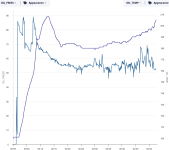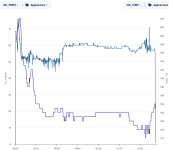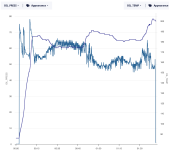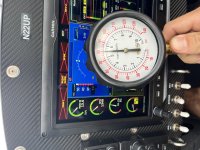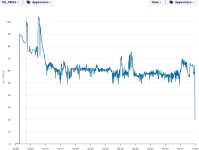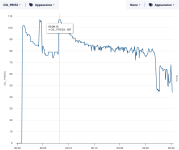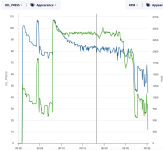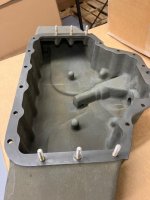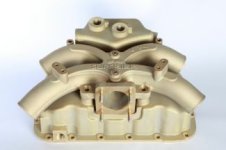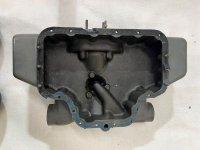plbarrett2004
Active Member
Hello all.
I'm flying my phase 1 period in my RV-8 behind an overhauled angle valve IO-360 A3B6D. Since the early hours of phase 1, the oil pressure has been on the low side of normal. (40's to 50's). I have made a couple adjustments along the way, each time seeing an initial rise in pressure, and then it settling back in to a lower pressure (albeit it is better than when I started).
The first few flights, the oil pressure was averaging 58 psi. Then after several more flights, the oil pressure settled down to around 48 psi. A bit low for my liking. So I pulled the oil pressure relief valve. I have the non-adjustable tall tower. Inside I found the 68668 2.04" Purple spring that is to my understanding normally for the short towers. This had 3 washers underneath. Over the next couple flights I increased this to 7 washers. This brought the PSI back up close to 60, but not quite. At this point, I decided a stiffer spring was in order. I installed the 61084 2.18" No-Color spring. This is the most common. I've done a couple iterations with this spring, including adding washers more than once. I believe I'm up to 7 washers. On today's flight, the average was about 55 psi.
It seems the washers make only a marginal difference. My biggest gain was going up in spring tension, so I'm contemplating now moving up to the LW-11716 2.12" White spring.
My question for the group is - am I missing something? Could something else be going on? Could it be a pressure sender issue? My instinct tells me the sender is ok, and that the next spring up will likely be the final solution. But perhaps I'm overlooking something.
The engine has been performing flawlessly so far. It's at 34 hours now, has great compression, low CHTs, good looking plugs, and great oil analysis. By every metric break-in has proceeded well.
Attached is today's oil pressure readings.
I'm flying my phase 1 period in my RV-8 behind an overhauled angle valve IO-360 A3B6D. Since the early hours of phase 1, the oil pressure has been on the low side of normal. (40's to 50's). I have made a couple adjustments along the way, each time seeing an initial rise in pressure, and then it settling back in to a lower pressure (albeit it is better than when I started).
The first few flights, the oil pressure was averaging 58 psi. Then after several more flights, the oil pressure settled down to around 48 psi. A bit low for my liking. So I pulled the oil pressure relief valve. I have the non-adjustable tall tower. Inside I found the 68668 2.04" Purple spring that is to my understanding normally for the short towers. This had 3 washers underneath. Over the next couple flights I increased this to 7 washers. This brought the PSI back up close to 60, but not quite. At this point, I decided a stiffer spring was in order. I installed the 61084 2.18" No-Color spring. This is the most common. I've done a couple iterations with this spring, including adding washers more than once. I believe I'm up to 7 washers. On today's flight, the average was about 55 psi.
It seems the washers make only a marginal difference. My biggest gain was going up in spring tension, so I'm contemplating now moving up to the LW-11716 2.12" White spring.
My question for the group is - am I missing something? Could something else be going on? Could it be a pressure sender issue? My instinct tells me the sender is ok, and that the next spring up will likely be the final solution. But perhaps I'm overlooking something.
The engine has been performing flawlessly so far. It's at 34 hours now, has great compression, low CHTs, good looking plugs, and great oil analysis. By every metric break-in has proceeded well.
Attached is today's oil pressure readings.



